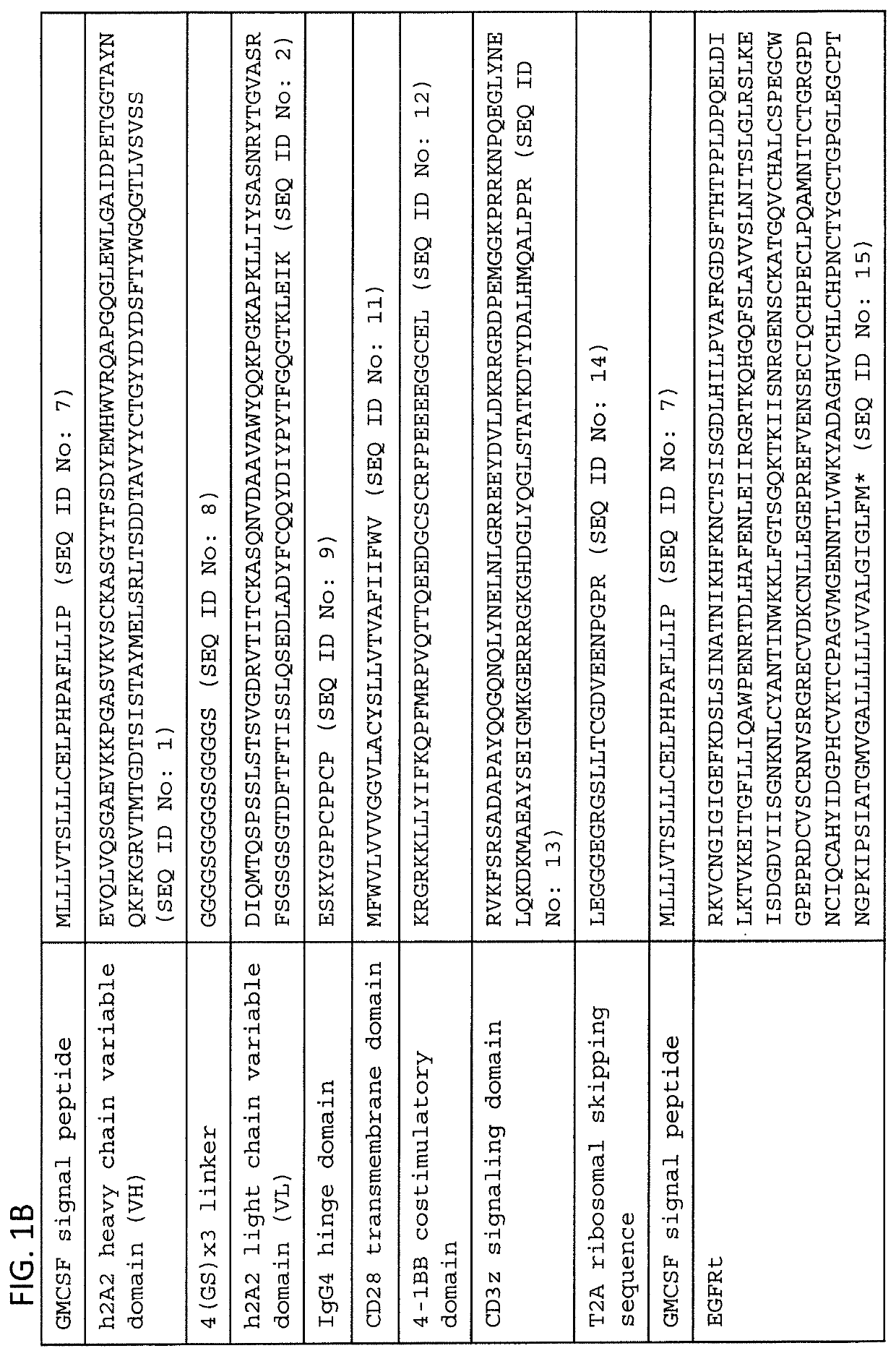ROR1-specific chimeric antigen receptors (CAR) with humanized targeting domains
a technology humanized targeting, which is applied in the field of chimeric antigen receptor with humanized targeting domain, to achieve the effects of humanization, increased affinity, and enhanced functionality
- Summary
- Abstract
- Description
- Claims
- Application Information
AI Technical Summary
Benefits of technology
Problems solved by technology
Method used
Image
Examples
example 1
Preparation and Functional Testing of ROR1-Specific CAR-Modified Human CD8+ and CD4+ T Cells with Humanized Targeting Domains
Materials and Methods:
Human Subjects
[0151]Blood samples were obtained from healthy donors who provided written informed consent to participate in research protocols approved by the Institutional Review Board of the University of Würzburg (Universitätsklinikum Würzburg, UKW). Peripheral blood mononuclear cells (PBMC) were isolated by centrifugation over Ficoll-Hypaque (Sigma, St. Louis, Mo.).
Cell Lines
[0152]The 293T, K562, MDA-MB-231 and A549 cell lines were obtained from the American Type Culture Collection. K562-ROR1 were generated by lentiviral transduction with the full-length ROR1-gene. Luciferase expressing lines were derived by lentiviral transduction of the above mentioned cell lines with the firefly (P. pyralis) luciferase (ffluc)-gene. The cells were cultured in Dulbecco's modified Eagle's medium supplemented with 10% fetal calf serum and 100 U / ml pen...
example 2
Binding of ROR1-Protein by Humanized ROR1 CARs
Materials and Methods:
Human Subjects
[0171]Blood samples were obtained from healthy donors who provided written informed consent to participate in research protocols approved by the Institutional Review Board of the University of Würzburg (Universitätsklinikum Würzburg, UKW). Peripheral blood mononuclear cells (PBMC) were isolated by centrifugation over Ficoll-Hypaque (Sigma, St. Louis, Mo.).
[0172]PBMC and T cell lines were stained with one or more of the following conjugated mAb: CD3, CD4, CD8 and matched isotype controls (BD Biosciences, San Jose, Calif.). Transduced T cell lines were stained with biotin-conjugated anti-EGFR antibody (ImClone Systems Incorporated, Branchburg, N.J.) and streptavidin-PE (BD Biosciences, San Jose, Calif.). Staining with 7-AAD (BD Biosciences) was performed for live / dead cell discrimination as directed by the manufacturer. Flow analyses were done on a FACSCanto and data analyzed using FlowJ...
example 3
Regression of Human Jeko-1 Mantle Cell Lymphoma in NOD / SCID / yc− / − (NSG) Mice after Adoptive Immunotherapy with CAR-T Cells Expressing Humanized ROR1 CARs
Materials and Methods:
Human Subjects
[0180]Blood samples were obtained from healthy donors who provided written informed consent to participate in research protocols approved by the Institutional Review Board of the University of Würzburg (Universitätsklinikum Würzburg, UKW). Peripheral blood mononuclear cells (PBMC) were isolated by centrifugation over Ficoll-Hypaque (Sigma, St. Louis, Mo.).
Cell Lines
[0181]The JeKo-1 (wild type), 293T, K562, MDA-MB-231 and A549 cell lines were obtained from the American Type Culture Collection. K562-ROR1 were generated by lentiviral transduction with the full-length ROR1-gene. Luciferase expressing lines were derived by lentiviral transduction of the above mentioned cell lines with the firefly (P. pyralis) luciferase (ffluc)-gene. The cells were cultured in Dulbecco's modified Eagle's medium supplem...
PUM
| Property | Measurement | Unit |
|---|---|---|
| concentration | aaaaa | aaaaa |
| incubation time | aaaaa | aaaaa |
| incubation time | aaaaa | aaaaa |
Abstract
Description
Claims
Application Information
 Login to View More
Login to View More - R&D
- Intellectual Property
- Life Sciences
- Materials
- Tech Scout
- Unparalleled Data Quality
- Higher Quality Content
- 60% Fewer Hallucinations
Browse by: Latest US Patents, China's latest patents, Technical Efficacy Thesaurus, Application Domain, Technology Topic, Popular Technical Reports.
© 2025 PatSnap. All rights reserved.Legal|Privacy policy|Modern Slavery Act Transparency Statement|Sitemap|About US| Contact US: help@patsnap.com



